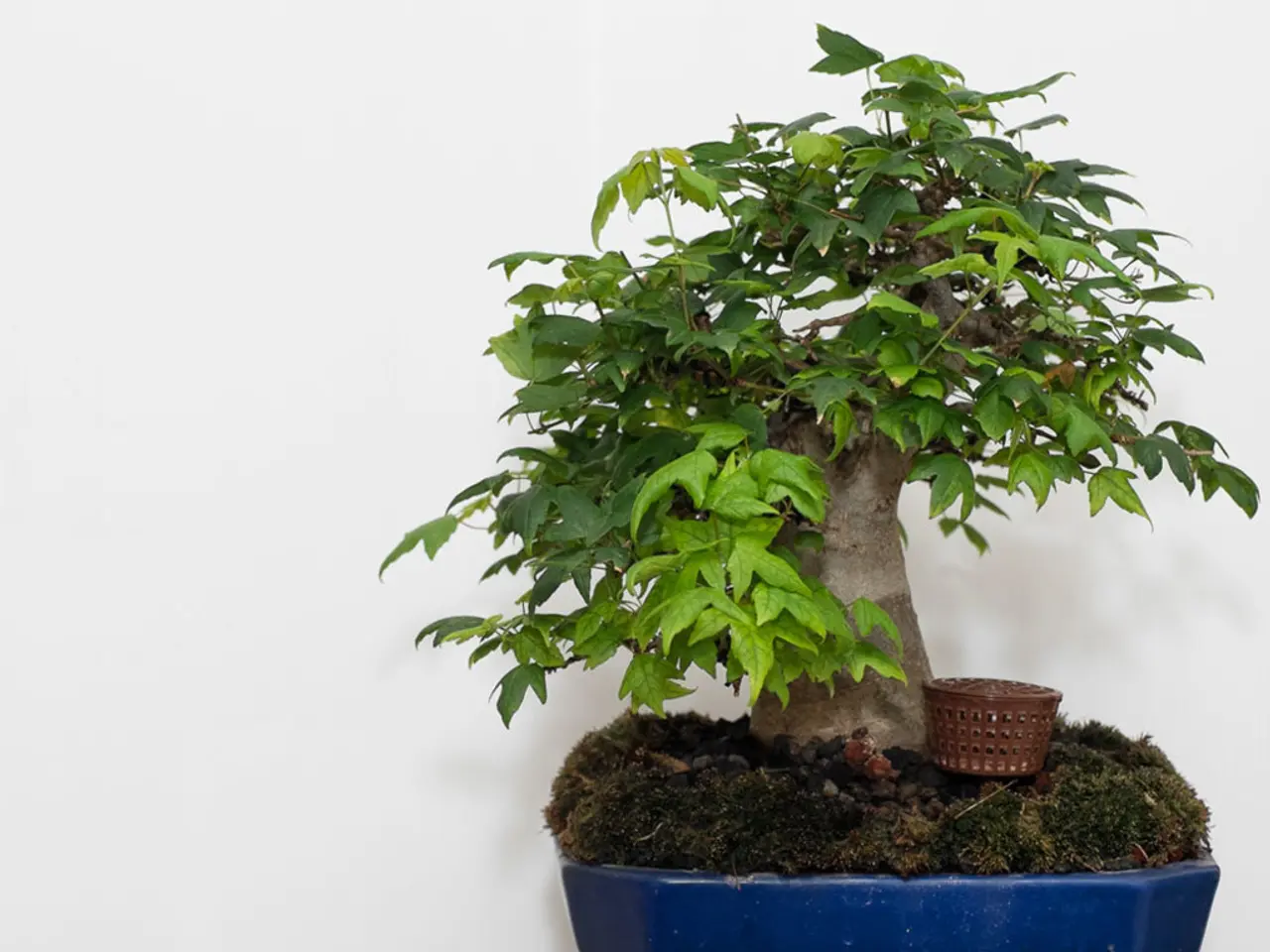Essential Bonsai Tree Care Yearlong Guide
Bonsai enthusiasts can now nurture their trees with a tailored care calendar based on seasonal changes and tree type. This approach aligns key tasks with the natural growth cycle of the tree, ensuring healthy growth and aesthetic development throughout the year.
### Understanding Your Bonsai Tree
To create a personalised care calendar, it's crucial to understand the specific requirements of your bonsai species. Different bonsai trees vary in growth habits, dormancy periods, and care needs. For instance, deciduous trees have a dormant winter period, while some tropical species may not.
Growth rate and age also play a significant role. Younger, actively growing bonsai might need more frequent repotting and feeding than older, established ones. Outdoor bonsai follow local seasonal changes, while indoor bonsai require more controlled environments.
### Organising Care by Seasons
Most bonsai care activities can be mapped into four main seasons, with species-specific adjustments.
1. **Spring (Renewal)**: Prune new growth, start fertilizing, and repot if needed. This active growth phase is ideal for shaping and feeding. Roots start growing, making repotting best now for most species.
2. **Summer (Peak Growth)**: Increase watering frequency, provide light shade, and check for pests. High heat stresses trees, so shade delicate leaves. Pests proliferate, so inspect regularly.
3. **Autumn (Preparation)**: Gentle pruning, reduce fertilizer nitrogen, and prepare for dormancy. Reduce nitrogen to slow growth. Increase phosphorus and potassium for root health. Prepare deciduous trees for leaf drop.
4. **Winter (Dormancy)**: Reduce watering, avoid fertilizing, and let the tree rest. Slow or stop feeding and pruning. Adapt watering to keep the root zone moist but not wet. Protect tropical bonsai from cold drafts.
### Customising for Tree Type and Local Climate
- **Repotting frequency**: Generally 1–5 years depending on species, age, and growth. Fast growers like tropical ficus may repot more often than slow growers. - **Feeding**: Use season-specific fertilizer formulations with higher nitrogen in spring, balanced nutrients in summer, and lower nitrogen in autumn to prepare for dormancy. - **Watering**: Adjust based on species tolerance—some bonsai prefer consistently moist soil, others drier conditions. - **Pruning and shaping**: Timing varies—deciduous species respond well to spring pruning; conifers often require pinching through summer.
### Building Your Calendar
- **Create a monthly/weekly checklist** incorporating these tasks. - **Note specific species sensitivities** (e.g., avoid harsh sun for junipers in summer). - **Incorporate local climate data** (temperature, rainfall) to fine-tune watering and protection. - **Schedule repotting windows** according to species and age. - **Plan regular pest inspections** during warm months. - **Include workshops or learning sessions** seasonally to improve technique.
### Example Monthly Breakdown (General for Deciduous Outdoor Bonsai)
- **March-April (Spring)**: Repot if needed, prune, start fertilizing (high nitrogen) - **May-June (Late Spring/Early Summer)**: Continue pruning lightly, increase watering, watch pests - **July-August (Summer)**: Shade from intense sun, water deeply and often, pest control workshops recommended - **September-October (Autumn)**: Reduce fertilizing nitrogen, prepare tree for dormancy, light pruning - **November-February (Winter)**: Minimal watering, protect from cold drafts, no fertilizer, rest period
By following this seasonal framework and adjusting for your bonsai’s specific needs and environment, you can create a comprehensive bonsai care calendar that ensures healthy growth and aesthetic development throughout the year.
- To care for an outdoor bonsai tree, one must adjust their care plan according to the local climate and tree type, with a focus on repotting frequency, feeding, watering, and pruning schedules.
- A tailored bonsai care calendar can be organized by coordinating key tasks with the natural growth cycle of the tree, such as pruning in spring, increasing watering in summer, reducing fertilizer nitrogen in autumn, and minimizing watering in winter.
- Building a personalized bonsai care calendar involves creating a monthly or weekly checklist that includes tasks specific to the bonsai species, local climate data, and scheduling repotting windows, regular pest inspections, and workshops or learning sessions.




